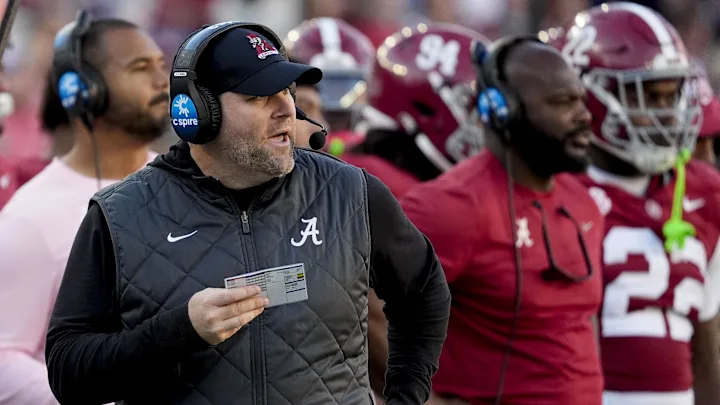
The Tide Holds Firm: Why Alabama Has Yet to See Transfer Portal Departures This Spring
The college football transfer portal has become an ever-present fixture in the offseason landscape, a period of significant roster flux as players seek new opportunities and programs adjust to departures and look for immediate upgrades. In this dynamic environment, the absence of outgoing transfers from a program of Alabama’s stature during the spring window of 2025 has raised eyebrows and prompted considerable discussion. While over 20 players entered the portal after the 2024 season, the fact that the spring window, which closes on April 25th, has so far remained quiet for the Crimson Tide speaks volumes about the current state of the program under its new leadership and the factors at play in player retention.
To understand why Alabama has, thus far, bucked the trend of spring portal activity, it’s crucial to consider the confluence of elements that influence a player’s decision to seek a transfer. These factors often include playing time opportunities, the relationship with the coaching staff, the overall team culture and environment, the pursuit of specific athletic or academic goals, and, increasingly, Name, Image, and Likeness (NIL) opportunities. In the case of Alabama, a program historically synonymous with stability and success under the legendary Nick Saban, the transition to a new era under Head Coach Kalen DeBoer introduces a unique set of circumstances that can impact player decisions.
One of the primary reasons for the lack of spring departures could be the sense of renewed optimism and opportunity that often accompanies a coaching change. While the departure of a figure as iconic as Saban inevitably brings uncertainty, it also presents a clean slate for many players. Those who may have felt their roles were limited or their potential not fully realized under the previous regime might see the new coaching staff as a chance to prove themselves and earn a more significant place within the team. Coach DeBoer and his staff have likely been proactive in communicating their vision for the program and engaging with players to build trust and foster a sense of belonging. This open communication and the promise of a fair evaluation can be a powerful deterrent against players seeking immediate exits.
Furthermore, Alabama’s sustained reputation as a national powerhouse and a consistent producer of NFL talent remains a significant draw. Players who are serious about their professional aspirations understand that the training, coaching, and exposure they receive at Alabama are among the best in the nation. Even amidst a coaching transition, the infrastructure and the commitment to excellence that have long defined the program are likely to persist. The opportunity to compete at the highest level, to be part of a winning tradition, and to showcase their skills on a national stage can outweigh the immediate allure of potentially more playing time at a less prominent program for many players.
The strength of Alabama’s recruiting classes over the years also plays a crucial role in player retention. The Crimson Tide consistently brings in top-tier talent, creating a highly competitive environment within the program. While this competition can sometimes lead to players seeking opportunities elsewhere if they perceive a lack of upward mobility, it also fosters a culture where players understand that earning playing time requires dedication, hard work, and patience. Those who have already invested time and effort into the program may be more inclined to stay and fight for their place, especially when faced with the uncertainty of adapting to a new program and potentially a similar level of competition.
Moreover, the academic support and resources available at a prestigious university like Alabama are significant factors for many student-athletes. The emphasis on academic success and the provision of comprehensive support services can contribute to a player’s overall satisfaction with their college experience. For those who value their education and are making progress towards their degrees, the academic stability and reputation of Alabama can be a strong reason to remain in the program.
The evolving landscape of NIL has also become an undeniable factor in transfer decisions. While specific NIL deals are often kept private, it’s reasonable to assume that players at a program with Alabama’s profile have access to significant NIL opportunities, both directly and indirectly through the program’s marketing power and alumni network. These financial incentives can certainly influence a player’s decision to stay, particularly when weighed against the potential uncertainty of NIL prospects at a new school. The stability and potential earning power associated with a high-profile program like Alabama can be a compelling reason for players to remain in Tuscaloosa.
It’s also worth noting the timing of the coaching change. Coach DeBoer was hired relatively quickly after Coach Saban’s retirement, allowing for a more seamless transition period. This swiftness likely minimized the period of uncertainty that can often lead to a flurry of portal entries. The new coaching staff had the opportunity to engage with the existing roster promptly, address concerns, and articulate their plans for the future, potentially reassuring players who might have otherwise considered transferring.
Furthermore, the culture that Coach Saban meticulously built over his tenure at Alabama, emphasizing discipline, accountability, and a team-first mentality, may still have a residual effect on the players within the program. While coaching styles may differ, the ingrained values and the strong bonds formed among teammates can contribute to a sense of loyalty and a desire to continue building on the foundation that has been established. This strong internal culture can act as a powerful retention tool, even in the face of change.
The fact that Alabama added 10 transfers and a significant number of recruits for the 2025 season also suggests a proactive approach by the new coaching staff to address any potential roster needs and build depth. This influx of new talent can create a sense of excitement and competition within the program, potentially making existing players more eager to prove their value within this evolving team dynamic. The coaching staff’s willingness to bring in players who fit their system and their vision for the program can also signal to current players the opportunities that lie ahead if they embrace the new direction.
It is important to acknowledge that the transfer portal window remains open until April 25th, and the situation could still evolve. However, the fact that Alabama has navigated this period thus far without any scholarship players entering the portal is a testament to the factors mentioned above. It suggests a program that, despite a significant leadership change, has managed to maintain a sense of stability, opportunity, and commitment among its players.
In conclusion, the absence of outgoing transfers from Alabama during the spring portal window of 2025 is likely the result of a complex interplay of factors. These include the renewed sense of opportunity under the new coaching staff, the program’s enduring reputation and NFL pedigree, the investment players have made in the program, the academic resources and NIL opportunities available, the swiftness of the coaching transition, and the underlying team culture. While the transfer portal continues to reshape the landscape of college football, Alabama’s current stability serves as a powerful reminder of the enduring strength and appeal of a program built on a foundation of excellence. The Crimson Tide appears to be navigating this new era with a firm hold on its roster, suggesting a confident step forward into the 2025 season.





